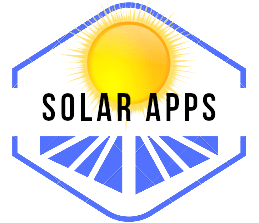Contents
Photovoltaic (PV) Solar Power Plants(Types of Solar Power Plants):
Types of solar power plants Photovoltaic solar power plants are the most common and widely recognized type of solar power plant. They utilize photovoltaic cells to convert sunlight directly into electricity. These cells are composed of semiconductor materials like silicon and they absorb photons to produce a flow of electrons. This current is called direct current (DC) and is later transformed into alternating current (AC) by an inverter so it can be used on the electrical grid.PV solar power plants can be deployed on a variety of scales, ranging from small rooftop installations to large utility-scale farms.
There are two main types of photovoltaic solar power plants:
a) Utility-Scale PV Plants: These large-scale installations generate electricity for the grid and supply power to thousands of homes and businesses. Utility-scale plants often cover vast areas and are strategically placed in regions with abundant sunlight.
b) Distributed PV Plants: Distributed solar installations are smaller-scale systems found on residential, commercial, or industrial rooftops, and in urban areas. They contribute to decentralizing energy production and help offset the electricity consumption of individual buildings.
Solar photovoltaic panels price
The price of solar photovoltaic panels has seen a remarkable decline over the past decade, making solar energy more accessible and cost-effective for homeowners, businesses, and governments alike. Factors such as technological advancements, increased production capacity, and growing market competition have all contributed to this trend. As a result, the cost of solar panels has become more affordable, enabling a wider range of people to harness the clean and renewable energy source that solar power offers.
This reduction in price has not only benefited individuals seeking to reduce their carbon footprint and energy bills but has also facilitated the global transition towards a more sustainable and eco-friendly energy system. With ongoing research and innovation, the price of solar photovoltaic panels will likely continue to decrease, making renewable energy an even more attractive and economically viable choice for the future.
In the first half of 2023, the suppliers of solar PV modules have been unveiled. In the first half of 2023, the combined volume of shipments from the top four brands reached an impressive 108 GW, which translates to about 55% of the total market share. Additionally, the total shipment volume of the top 10 brands amounted to a remarkable 168 GW, which is equivalent to almost 85% of the market share.
Notably, the latest rankings indicate a slight decrease in market share for both first-tier and second-tier brands compared to previous evaluations. This information gathered from the top solar PV module manufacturers is approximated through meticulous research encompassing tender data, supply contracts, and supplier visits, as described in the table.
GCC Solar PV Tariffs, Capacity (MW), Year (2015 -23):
| GCC Solar PV Tariffs MBR Solar Park Phase 2 MBR Solar Park Phase 3 Sweihan MBR Solar Park Phase 2 Sakaka Dumat al-Jandal wind IPP Al-Kharsaah Al-Dhafra MBR Park Solar Phase 5 Qurayyat Rabigh Jeddah Sudair Shuaibah Al-Rass Saad Wadi al-Dawassir Layla MBR Solar Park Phase 6 Al-Ajban | Capacity (MW) 200 800 935 950 300 400 800 1,500 900 200 300 300 1,500 600 700 300 120 80 1,800 1,500 | Year (2015-23) 2015 2016 2016 2015 2018 2019 2020 2020 2020 2021 2021 2021 2021 2021 2022 2022 2022 2022 2023 2023 |
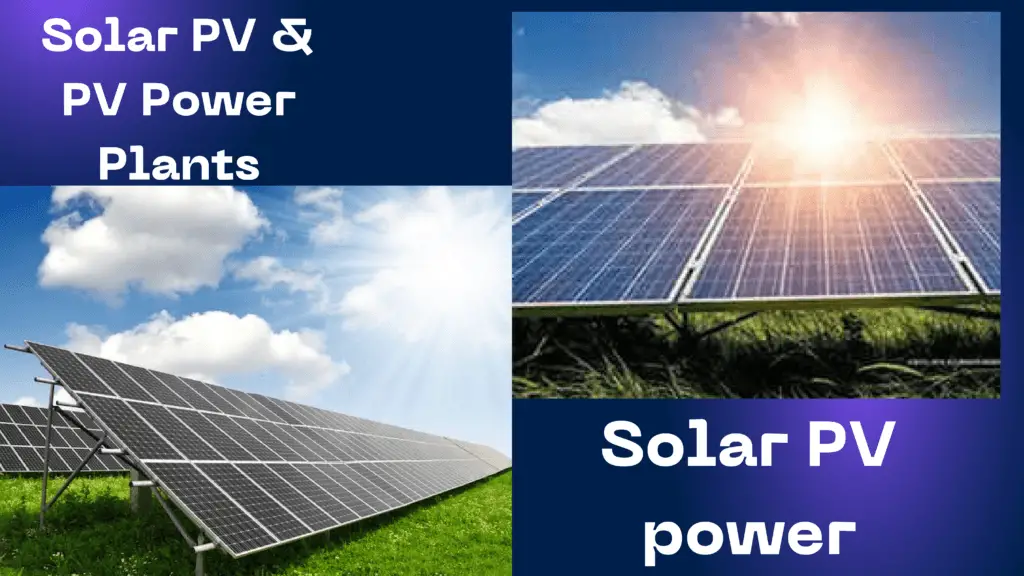

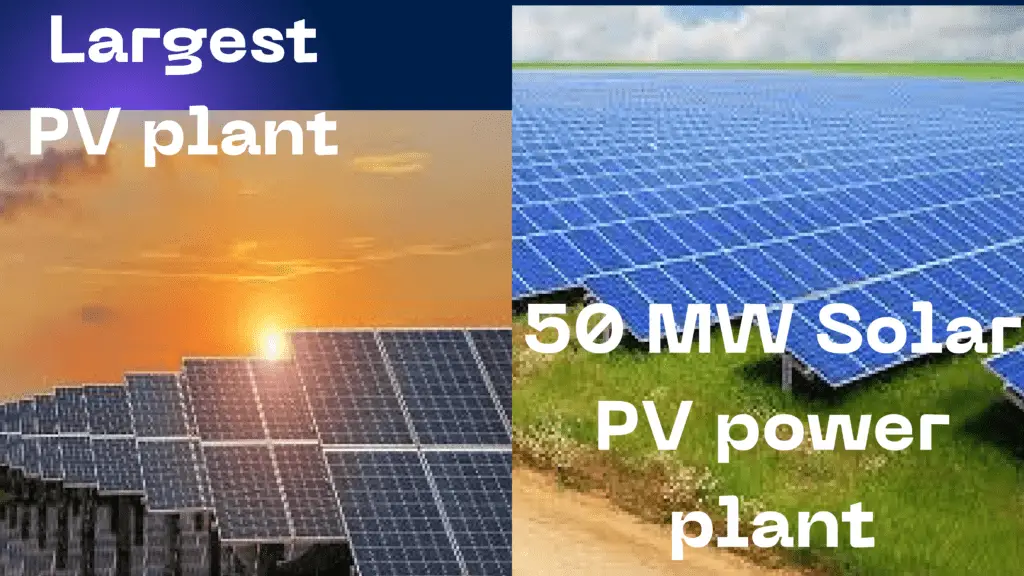
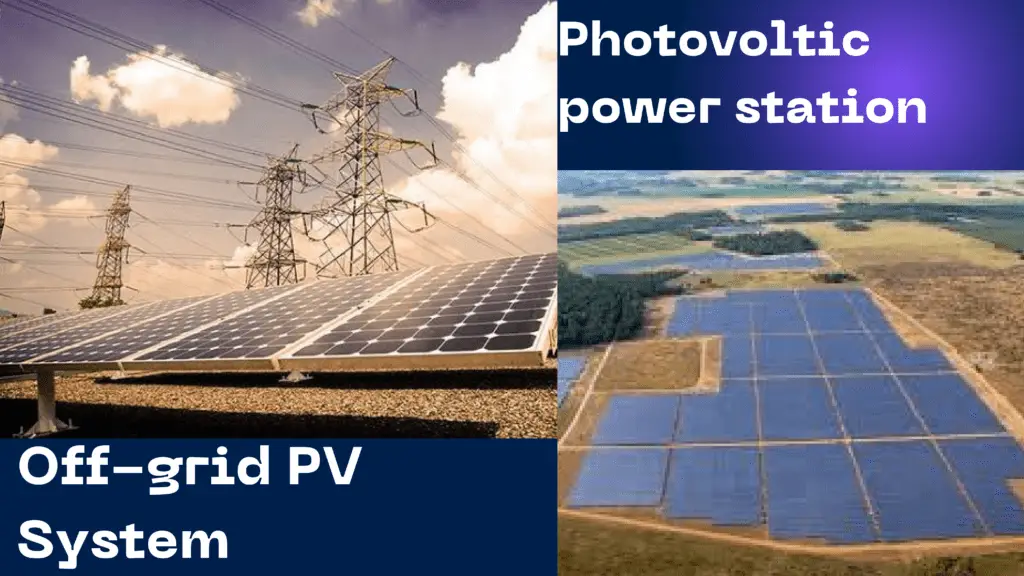
Concentrated Solar Power (CSP) Plants:
It uses mirrors or lenses to concentrate sunlight onto a receiver, which converts the heat into electricity. It uses various technologies to achieve high concentrations of solar energy. These include parabolic troughs, solar power towers, and dish/Stirling systems. Parabolic troughs use curved mirrors to focus sunlight onto a receiver tube, while solar power towers use a field of mirrors (called heliostats) to reflect sunlight onto a central tower.Dish/Stirling systems concentrate sunlight onto a receiver mounted on a dish-shaped reflector. CSP plants are capable of storing excess heat, allowing for electricity generation even when the sun is not shining.
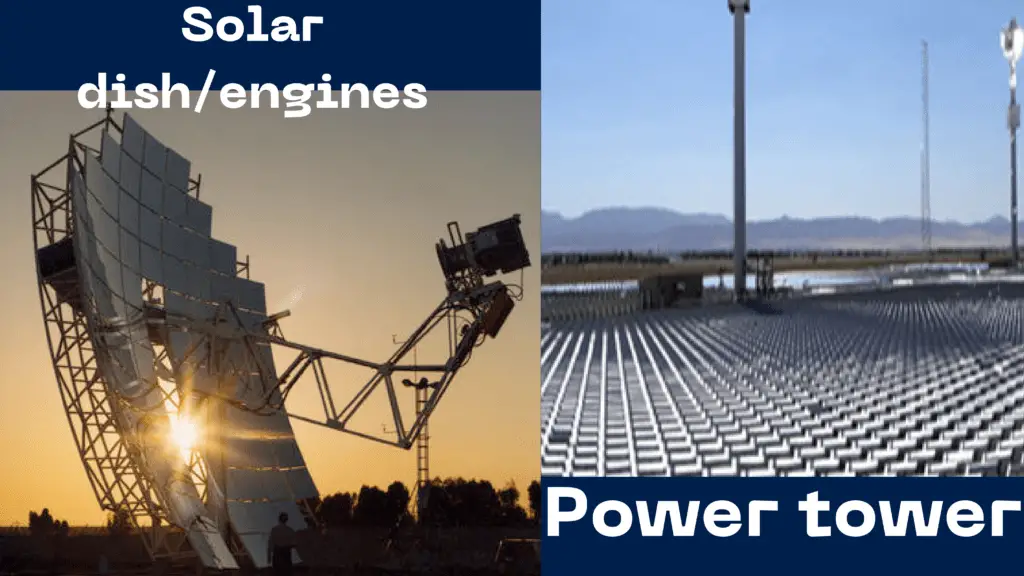
The main types of CSP plants are:
a) Parabolic Trough Systems: Parabolic-shaped mirrors concentrate sunlight onto a receiver tube placed at the focal point. These systems are commonly used in large-scale power plants due to their mature technology and high efficiency.
b) Solar Power Tower Systems: This design uses a field of mirrors, known as heliostats, to direct sunlight onto a central tower receiver. The concentrated heat is used to generate steam and power turbines.
c) Linear Fresnel Reflectors: These systems employ long rows of flat mirrors to concentrate sunlight onto elevated receivers, similar to parabolic troughs but with more cost-effective manufacturing
Floating Solar Power Plants:
Floating solar power plants, also known as floating photovoltaic (FPV) systems or photovoltaics, are an innovative solution for utilizing solar energy in water bodies. These power plants consist of solar panels mounted on floating platforms, typically on reservoirs, lakes, or ponds. Floating solar has gained popularity due to its potential to utilize otherwise unused water surfaces, minimize land use, and reduce evaporation from the water body. Furthermore, the cooling effect of the water can enhance the efficiency of the solar panels, improving overall electricity generation.
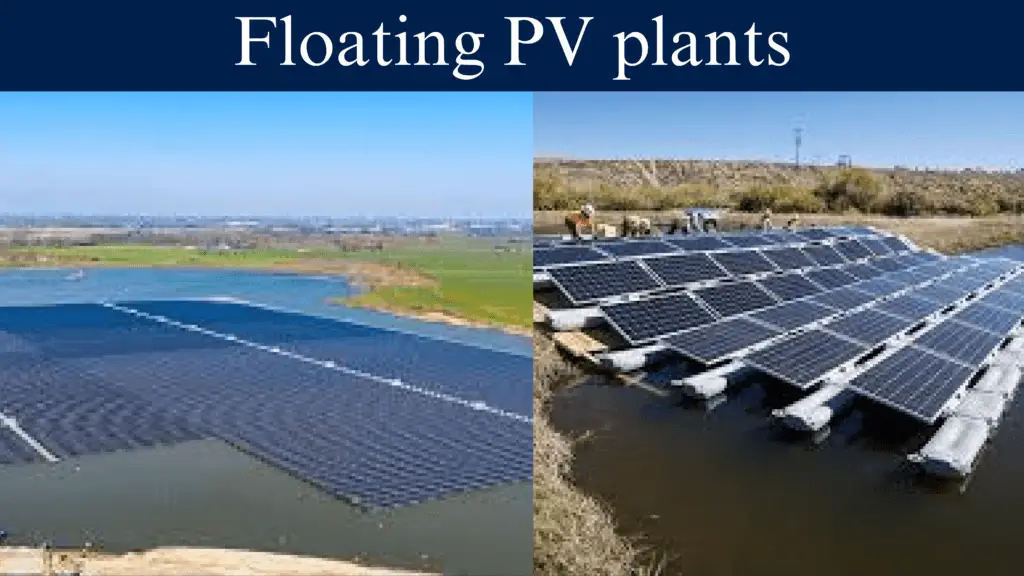
Floating solar power plants typically employ similar photovoltaic technology as ground-mounted solar farms. The buoyant structures are designed to be durable, weather-resistant, and environmentally friendly.
Hybrid Solar Power Plants:
Solar power plants that are hybrid combine solar energy with other sources of energy like wind, biomass, or traditional fossil fuel generators. This integration allows for a more stable and reliable power supply, as the system can draw from multiple sources depending on availability and demand. Hybrid solar plants are often designed to maximize renewable energy usage and reduce dependency on non-renewable resources. Switching to solar panels ensures a dependable and steady supply of electricity, no matter the weather conditions. You can enjoy peace of mind and flexibility with this reliable energy source.
Common solar hybrid configurations include:
a) Solar-Wind Hybrid Plants: Combining solar and wind power takes advantage of their complementary generation patterns, as the wind tends to be stronger during different times of the day compared to solar.
b) Solar-Battery Hybrid Plants: These systems incorporate energy storage solutions like batteries to store excess solar energy during peak production periods and release it during times of low or no sunlight.
Conclusion:
Solar power plants have come a long way in diversifying their technology and applications. From large utility-scale PV plants to innovative floating solar installations, harnessing the sun’s energy has become an integral part of our sustainable energy landscape. As we continue to explore and improve solar technologies, these clean and renewable energy sources will play a pivotal role in combatting climate change and building a greener future for generations to come.
